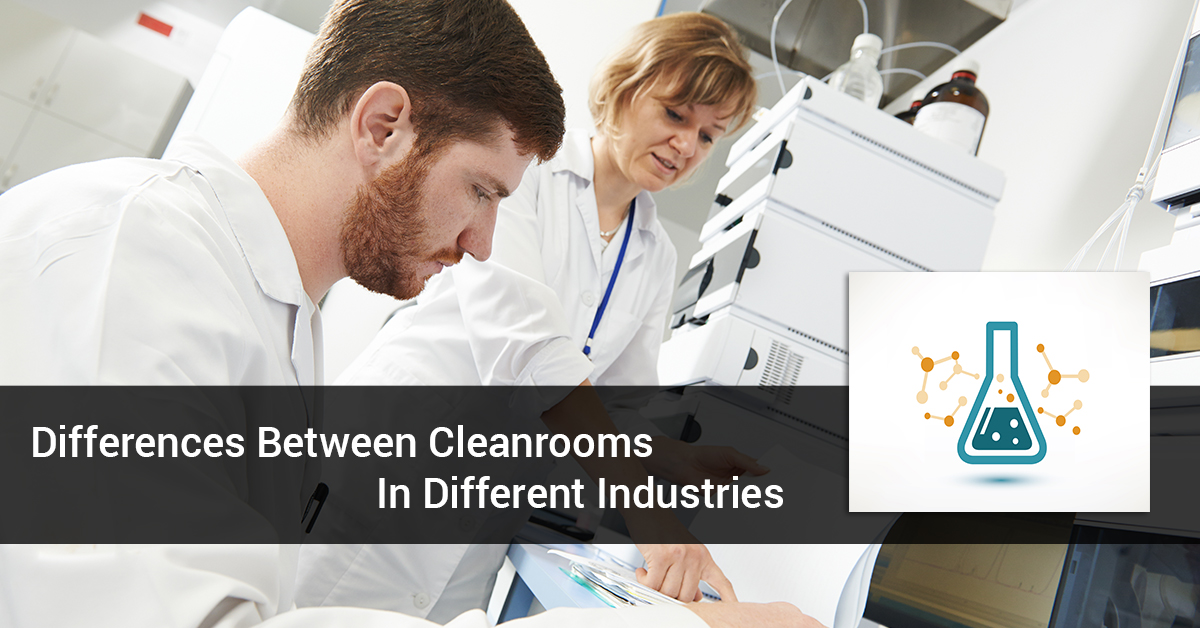Differences Between Cleanrooms In Different Industries
Posted by SOS Cleanroom on 18th Sep 2017

Like many things in life, not all cleanrooms are created equally. This is very much intentional, and for good reason. Cleanroom specifications and classifications vary by industry, as different manufacturing operations have their own standards for what’s considered optimally or passably ‘clean.’ Now, if you ask us here at SOS Cleanroom, safe is better than sorry, and that’s exactly why our online cleanroom supply shop carries such a comprehensive range of cleanroom products for your company, industry, or cleanroom manufacturing operation. Don’t believe us? Check out our cleanroom product selection here!
Providing Cleanroom Facility Products For Different Industries
What exactly makes a cleanroom in one industry different than another? It’s a perfectly valid question, but there are many reasons. In another cleanroom-centric blog post from the team at SOS Cleanroom, let us yet again dive into the cleanroom world by looking at cleanrooms in different industries - you might actually be surprised by what you learn! We all learn something new just about every single day, so read on to get your new knowledge in for the day.
Pharmaceutical And Biotechnology Cleanrooms
Many biotechnology and pharmaceutical industry cleanrooms are specified at ISO Class 5 to ISO Class 8 and apply to many cleanroom standards. If you’re not familiar, ISO classes and standards are set by the International Organization for Standardization. The ISO creates documents that provide various requirements, specifications, guidelines and characteristics that can be used consistently to ensure that materials, products, processes and services are fit for their intended purpose.
Like any cleanroom, particulate matter is a concern. Specifically, viable particulate contamination should receive careful attention. Viable particulate contamination refers to the ability to keep the room clean by typically using modular or stick-built components with integral cove bases, cove corners, and coved ceilings in order to maintain a cleanable surface condition. This is absolutely crucial for biotechnology and pharmaceutical cleanroom standards.
Overall, concealed areas for bacterial growth are plain unacceptable. These rooms typically use cleanroom technology that keeps the seal unbroken during sanitation and filter changes. Biotechnology and pharmaceutical cleanrooms typically have a heavy focus on pressurization control, the elimination of cross contamination and the filtration of outdoor air and indoor air.
Optic And Defense Industry Cleanrooms
The optics and defense industries use cleanrooms for many applications, including microelectronic, biotech and pharmaceutical, and medical device. These applications also include things like chip making for controlling missiles, radar and electronic components, laser development for guidance systems and even biological components for vaccines and test agents.
As far as most cleanrooms go, those for the defense industry usually require the highest levels of security and clearance. Due to the sensitive nature of various defense industry operations, this typically leads to the stick-built approach in many defense industry cleanrooms to allow for the perimeter to meet government security requirements.
Medical Device Cleanrooms
Cleanrooms are a standard manufacturing environment for medical device technology, and typically fall under ISO Class 7 and ISO Class 8 range. As you can likely assume, the manufacturing process for these products ensures that the surface of the product does not have particulate contamination when it is completed. So, it is imperative that the cleanliness level inside the room is maintained both from a cleanroom standpoint as well as a personnel protocol standpoint.
As we’ve covered before, people are the major contaminator in most processes. This is why personnel are required to wear full gowns, booties, gloves, and hairnets in medical device manufacturing, and also in the biotech, pharmaceutical and microelectronics (think semiconductors) industries. While certain medical device cleanrooms may not have the exact same stringent gowning practices as pharmaceutical cleanrooms, the protocol and cleaning process is just as important. Overall, the cleanroom environment for medical devices usually aims to eliminate surface contamination, or viable particulate, on their products.
Nanotech and Microelectronic Cleanrooms
These cleanrooms are designed to maintain temperature, humidity, particulate, static and pressure levels. This is due to the fact that these factors, as well as static forces, can directly affect or even compromise the final product - and because these finite electronic manufacturing operations are so costly, there’s simply no room for error in the budget.
Since defects can occur at any stage in this process, the cleanliness level of the nanotech and microelectronic cleanroom environment must be maintained on a constant basis. Vigilance is key! Many steps are involved in order to come to a final product, and a defect along the way might not be discovered until the very end. Most of these cleanrooms typically operate in a cleanroom classification range from ISO Class 1 to ISO Class 6 with various processes occurring at different levels of cleanliness.
Automotive Cleanrooms
Since the days of Henry Ford, the original Model T and the invention of the assembly line, the automotive industry has made incredible strides in their manufacturing processes. Indeed, a wide range of attention is given to mass defects, or preventing them. Like other industries that we’ve covered in today’s blog post, the need for manufacturing auto components inside cleanrooms has become pronounced.
Factors like pressure, temperature and humidity are just as important to other rooms designed in the cleanroom classification range of ISO 7 and ISO 8. The defects that can (and do) occur in the automotive manufacturing industry are vast, including costly errors like glass coatings, electrical components, and painting.
SOS Cleanroom Has Your Industry Covered
Whew! We know that was a lot of information to take in, but rest assured that our wide range of cleanroom facility products like cleanroom dispensers, workstation cleaning materials, cleanroom garments, cleanroom bottles and more are able to serve your manufacturing operation with the highest levels of cleanliness in mind. Shop our collection today!


